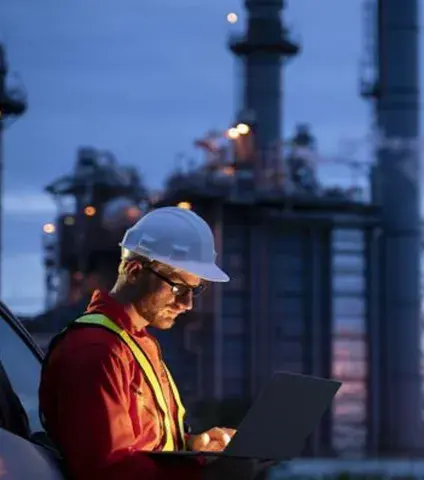Skip to main content













Environmental and social pressures. Complex supply chains. Infrastructure challenges. Just some of the challenges you are facing. Partnering with Lockton brings you the benefits of working with an internationally connected energy and power team. Our experts help you navigate your current and future risk landscape - and support you with cost-effective risk transfer solutions.
Independent specialist expertise, for all the risks you face
Environmental and social pressures. Complex supply chains. Rising costs and reducing margins. Just some of the challenges you are facing
Partnering with Lockton brings you the benefits of working with an internationally connected energy & power team. Our experts help you navigate your current and future risk landscape - and support you with cost-effective risk transfer solutions.
We’re a trusted partner to your sector. Working like an extension of your own team, we provide a full range of risk transfer and management across financing, construction, and operations.
You gain direct access to the best markets globally. You also benefit from our analytics capabilities - helping you optimise your programme, get the best market outcomes and drive competitive pricing to reduce your costs.
With clients in the upstream, midstream, downstream, utilities, renewables, and power sector, we know your industry inside out. We bring the knowledge, experience and insight to deliver a fully tailored service that perfectly fits your precise needs.
Energy & Power market update
Stay ahead of industry trends with our upcoming Energy & Power market update. This comprehensive report provides insights into 2024 market developments and the outlook for 2025, including key insurance trends, rate movements, and capacity shifts.
Read nowOur capabilities
Project advisory services
Captive feasibility & structure analysis
Construction & handover advisory
Decommissioning
Due Diligence & Red Flag Reports
Early costing support pre EPC / financial bid
Early risk identification & transfer to counterparties
Engineering support to identify key operational & Nat Cat Risks
Facilitating early contractual negotiations
Mergers & Acquisitions support
Operational advisory & long term service
Price benchmarking
Risk & cost reduction analytics
Risk Assessment Reports & Risk Reviews
Support at conception stage of any project or acquisition
Coverage expertise
Carbon Credit Protection
Cargo Insurance and Marine Delay in Start-Up
Construction All-Risks and Delay in Start-up Insurance
Cyber
Debt Financing Insurance
Directors’ & Officers’ Liability
Employee Benefits
Environmental Insurance
Liability Insurance (Office, Business, and Project exposure)
Operational All Risks & Business Interruption
Parametric Bond Solutions
Political Risks
PPA and Offtake Protection
Professional Indemnity Insurance
Property Insurance (Office/Business exposures)
Surety Bonds
Tax Liability
Technology and system Performance
Title Insurance
Warranty and Indemnity / Transactional Liability
Transition with ease
Meet all your energy transition insurance and risk transfer needs through Lockton. Let our dedicated specialists get to know you, understand your business, advise and protect you. From starting your transition to making a claim, we’re with you.
Watch hereWhat we bring to your business
01
Tailored approach
A one-size-fits-all approach never works. You need tailored insurance. When you choose us as your trusted partner and advisor, we work hard to gain deep insight into your business and your objectives. We’ll manage your insurance programme.
02
Best available terms from the market
Our ability to access the market globally underpins our differentiated strategy. Our strong emphasis on building senior-level market relationships and quality risk presentations deliver best results.
03
Optimum programme design
Our analytics, risk engineering and risk financing teams work with your own teams, sharing insights that add real value. This helps measure and manage your risk, achieve optimum programme structure, control costs, and drive operational efficiencies.
04
Depth of experience
Led by our senior people, a technically strong, experienced, and hand-picked team is ready to support you, wherever you are in the world.
05
Risk management support
Insurance and risk management are intrinsically linked. We work with you to establish pragmatic and effective risk management strategies. Solutions that directly reflect your specific risk profile and your business needs and aspirations.
06
Lenders’ requirements
Our expertise in debt-financed projects helps minimise obligations and contain costs. We proactively engage with lenders early and conduct detailed analysis to set optimal limits and deductibles, ensuring the best insurance solutions for your needs.
07
Contractual review
We review contract documents and advise you on where we believe you may be accepting unnecessary risk. Our input helps ensure the insurance elements of any contract properly reflect and support your project requirements.
08
Claims advocacy
By starting the review process early, we make sure you won’t face any surprises. We help get claims resolved quickly, leveraging our access to key insurer decision-makers.
09
Globally connected team
Our globally connected team has access to insurance and reinsurance markets locally and globally to ensure you benefit from the most favourable terms available. Negotiations with underwriters are undertaken by those who know your business best.
Why we’re different
Your needs, our priority
As the world’s largest family-owned risk & insurance broker, we’re free to focus on what truly matters: your business. We’re not driven by quarterly pressures from financial markets. Our independence empowers us to act consistently in the best interests of your business.
A dynamic culture
Our culture creates the space for us to be challenging and creative. This underpins the way we work with you, across all our teams and across the insurance market. It’s a fundamental differentiator that allows us to work effectively across all our specialist teams. It means we can effectively mobilise the entire resources of Lockton for your benefit.
Stability for your future
We recognise the value to you of committed and stable service teams. Our growth strategy is organic, consistently focused on attracting and retaining the very best talent. This ensures the long-term stability of our teams and the full engagement of our people. It assures you of focused broking, and first-class service.
Remaining resilient in a volatile world
In an increasingly challenging market, it’s more crucial than ever for the energy and power industry to anticipate, prepare for, and respond to disruption. Our latest whitepaper examines how organisations can take a strategic approach to risk.
Read hereOur Energy & Power Team
Gary Doran
Partner, Head of Energy, Power and Construction
gary.doran@lockton.com
+44 207 933 2939
Carlos Vinícius Simonini
Diretor Geral Rio Janeiro / Energy LATAM
carlos.vinicius@lockton.com
+55 21 2212 1610
John Hatton
Head of Specialty (Risk Solutions)
John.Hatton@lockton.com
+971 543063448
Sigbjørn Larsen
Head of Energy, Renewables and Complex Risks
Sigbjorn.Larsen@lockton.com
+47 482 73 279
Harsh Chhajer
Head of Specialties
harsh.chhajer@lockton.com
+65 9459 0870
Ranga Jayaratne
National Manager, Power & Energy
Ranga.Jayaratne@lockton.com
+61 412 862 171
Matthew George
Account Director
MatthewG@lockton.com
+011 510 1348
Rene van Winden
Practice Leader, United States
rene.vanwinden@lockton.com
+1 713 458 5241
Get in touch
Energy & Power FAQs
Offshore Construction
Q. What role does a Marine Warranty Surveyor play in an offshore construction project?
A. ‘The prime objective of the marine warranty surveyor is to assess whether the risks associated with the relevant onshore and offshore marine construction operations are reduced to an acceptable level in accordance with best industry practice.’ - Joint Rig Committee Marine Warranty Surveyor Good Practice Guideline. In an offshore construction project, a Marine Warranty Surveyor (MWS) plays a critical role by acting on behalf of insurers as an independent third-party specialist. The MWS acts as the insurer’s ‘eyes and ears’ and is responsible for ensuring that the project complies with industry standards, contractual obligations and safety requirements. The involvement of a MWS is typically a condition set by underwriters with the aim of reducing the risk of loss / damage during high-risk phases of a project, such as heavy lifts, transportation, installation and commissioning.
For an offshore construction risk, underwriters will set out / agree a project specific ‘Scope of Work’ which will outline the MWS activities that are to be carried out. This scope of work will list the various project activities that the MWS is required to review / approve and also the activities that the MWS is required to attend in person. The MWS will look to implement the scope of work (once agreed) and will provide formal certification at critical points during the project, such as Certificates of Approval (CoAs), which are required by underwriters before certain activities can proceed. As with the scope of work, the appointment of the MWS is also project specific and underwriter driven. Underwriters will usually approve a select panel of MWS for a given project, based on their prior experience, the project type, geographic location etc.
The cost of a MWS is usually at the expense of the insured, however, due to the critical role that the MWS plays and the risk mitigation service that they provide, these costs are often reimbursed by insurers.
Overall, Marine Warranty Surveyors play a vital role in offshore construction projects and are a valuable tool to be utilised by both the assured and insurers.
How does insurance respond to project delays and / or CAPEX increases during the course of construction.
Project delays and cost increases are a very common occurrence in the world of offshore construction. Complex technology, issues with global supply chains and personnel shortages (alongside many other factors) can all lead to a project period needing to be extended or the project’s CAPEX running higher than initially declared. Insurance, in particular coverage under the WELCAR wording, responds to such scenarios in the following ways:
Project delays – Under WELCAR, the policy scope is intended to provide the assured with coverage up until the operational start-up date of the asset insured. Despite the fact that an expected completion / handover date will have been agreed at inception, should the project be delayed beyond this expected date, insurers should agree to an extension of the policy beyond the date previously agreed. The intention of WELCAR is to provide ‘cradle to grave’ coverage i.e. from commencement of the construction until its completion, rather than coverage up to to a pre-determined date.
It should be noted, however, that, if the period of a project does need to be extended as a result of a delay, there is likely to be additional premium payable in respect of the additional time on risk. This is calculated on a per-risk/activity (or sometimes pro-rata) basis and payable at the completion of the policy as a final adjustment.
CAPEX increase – Again, under WELCAR, the insured is required to submit an ECV (Estimated Contract Value) at the inception of coverage – It is clear to insurers that this is an anticipated figure only as there may be a number of changes to costs / contracts etc. during the course of an offshore construction project. For this reason, the policy is flexible and able to cater for increases in CAPEX during the course of the project. This flexibility comes via the Escalation clause which allows an automatic increase in coverage up to an agreed percentage of the declared ECV. This escalation factor is usually 25%.
The final value of the project is known as the Final Completed Value (FCV) and, should there be a difference (increase) between the ECV and the FCV, then, as with a period increase, there will be an additional premium payable in respect of the difference (conversely, there would be a return premium payable should the FCV be lower than the ECV). This is usually payable at the completion if the policy as a final adjustment.
It should be noted that, should the CAPEX increase beyond 25% of the ECV, then the assured would be advised to seek a higher sum insured in order to ensure that their exposures are adequately covered.
Interconnectors/Cables
Q. How can I reduce the overall quantum and volatility of premiums charged by insurers for subsea cable insurance risks, including for interconnectors and offshore wind farms?
A. Programme optimisation ideally as early as during the development of project with the use of data analytics and Alternative Risk Transfer (ART) solutions can help to avid ‘dollar swapping’ with insurers and even out the market volatility. Captives or comparable insurer solution (without the need to set up or lease a captive) offer control and potential cost savings, while parametric insurance provides swift payouts based on predefined parameters. Additionally, pooling risks with other subsea cable owners (such as investing in stand-by repair vessels), investing in engineering solutions (for example cable monitoring systems and universal joints), and diversifying risk portfolios can mitigate constraints. By combining these strategies, subsea cable owners can reduce to their total cost of risk.
What are the key risks that insurance can protect against for my wind or solar power generation asset?
The key risks insurance can protect against are damage to property as well as legal liability from personal injury or property damage caused by activities at your power generation asset. The protections offered by insurance can be relatively narrow or quite broad depending on the type of insurance procured. Coverage could be limited to only providing indemnity if you suffer a specific type of risk event, such as a fire. However Lockton provides much broader coverage as standard, including loss due to ‘All Risks’, including machinery breakdown. Further coverage extensions are available for the loss of revenue caused by the property damage loss. Insurance can provide protection not just for operating power generation assets, but from the start of the project lifecycle. Such as protection from legal liabilities in the development and design stage, as well as property coverage during the procurement stage, whether at the equipment manufacturer’s factory, in transit by sea, road, and rail, and during construction at your site.
How can I make my asset more resilient against the effects of climate change?
Firstly, you will need to conduct a full review of your locations to fully understand what climate exposures they face (temperature, flood, windstorm, wildfire etc.), and the potential impact of those events on your organisation. You will then need to understand how climate effects may change as we move forwards, will there be a higher frequency of climate events or will the effects be more severe when they occur. It is also key to understand the timeframe within which these changes are expected to materialise. Once you have this understanding, updated your risk profile / register you can begin to plan for how to mitigate the effects of climate incidents. Some of the potential events include: • Rising temperatures and the effect on cooling systems for the processes • Rising water levels and the potential exposure to flood – Local to the plant and in the wider area • Increased river flood risk from upstream sources in mountains • Reduced river water levels and so access to barge traffic reduced and need to move more by land • Increased frequencies of storms and the potential effect on deliveries (Ship berthing) and infrastructure in the area (Road and rail access restrictions) • Drought affecting availability of water for cooling, steam generation, process use and need to move from ‘once through’ systems to ‘closed circuit’ cooling • Restrictions on volumes of water able to be taken from the local river and outfall temperature of water discharged from the plant • Wildfire – Increased exposure • Changes in effluent treatment systems and what is acceptable to discharge given changing water levels and quality • Changing seasons and duration of these can affect the availability of seasonal goods and the need for alternative sourcing or the need to look for alternative production of finished goods. Some of these issues can be addressed quickly with minimal cost, while others are more strategic and need planning and capital or long term agreements in place. Business Continuity Planning is a key factor in being able to plan your way out of a problem.
What do insurers look for to consider a renewable energy asset “best in class”?
Renewable energy has seen exponential growth in recent years. Insurers see hundreds of new submissions each year for assets seeking to transfer risk to the global insurance markets. Differentiating the risk profile of your project from the pack is the key to receptive treatment by insurers. Evidencing the project’s due diligence against natural perils (flood, windstorm, earthquake, tornado, and hail) risk, technological risk, and contractual risk from key suppliers, executed by an experienced project management team, evidences to insurers a best-in-class renewable energy asset. Lockton engages with the asset management team early in the project life cycle to show how best to evidence the good work the team is doing in the development and operations of their project. Where Lockton identifies deficiencies in risk management, our team of risk engineers are on hand to provide guidance on best practices to help the asset achieve “best in class” status.
How does the addition of Battery Energy Storage Systems (BESS) change the risk profile of my clean energy portfolio?
Energy storage has become an increasingly critical component of the renewable energy transition. It’s role in balancing grid stability allows greater integration of renewable generation technologies such as wind and solar. However, this technology introduces new risks that wind and solar asset developers may be unfamiliar with. For one, BESS introduces potentially volatile chemicals contained within the battery cells to the project site. Adverse operating conditions can result in a chemical reaction known as ‘thermal runaway’, resulting in severe fire risk. Robust factory testing and certification reduces this risk, but understanding test results is key to ensuring your project technology is fit for purpose. Managing the fire risk through adequate spacing between BESS units is also a critical component of the BESS risk profile. As a new technology, BESS risk management practice is evolving rapidly. What was considered an acceptable risk yesterday may not be today, or tomorrow. Lockton’s experience with BESS projects ensures you will be kept abreast of the latest developments in fire safety standards for BESS as you look to add this technology to your clean energy portfolio.
What type of insurance do I require to attract financing for my renewable energy project?
Access to debt markets at attractive rates can be a determining factor in whether a renewable energy project gets out of the starting blocks. The current high interest rate environment (from recent levels) means any steps the project can make to keep capital costs down improves the chances of reaching Final Investment Decision (FID). The non-recourse finance supporting renewable energy projects is concerned with the (non-) performance of three key project stakeholders: • EPC Contractors • Original Equipment Manufacturers • Electricity Offtakers Lockton Global Energy & Power has specialists across disciplines such as Surety, Product Warranty, and Political & Trade Credit Risk to address financier’s concerns with these stakeholders. Insurance products backstopping the performance of these entities with investment grade (AA-) paper from leading insurers decreases the risk profile of the project, allowing the project improved financing terms and leverage.
Various stakeholders in my renewable energy project have different risk appetites. How do I create an insurance programme that suits all parties?
This is a common occurrence in non-recourse financed projects. Some equity sponsors may be keen to maximise returns and have a healthy appetite for risk due to lessons learned from previous project build-outs and operations, as well as the protections their own balance sheet provides them above the project level. Others equity sponsors may be more risk averse. On the other hand, project debt providers will have one overarching concern: ensuring the debt repayment schedule is kept to. Catering for these competing interests within one project can be complicated, but Lockton can implement strategies to accommodate the requirements of all stakeholders for their share of the project. Proportional coverages for certain coverage extensions and loss-retention side cars are a two examples where all parties interests can be met.
Cyber & Energy FAQs
How does Lockton contribute to the de-risking of CCUS projects?
Each CCUS (Carbon Capture, Utilisation, and Storage) project encounters unique challenges and risks that can greatly affect its overall success or potential failure. These challenges may lead to construction and commissioning delays, operational and commercial interruptions, capacity constraints stranded assets, underutilisation, Co2 leakage and associated liabilities, and early decommissioning.
The specific nature of these risks will differ depending on whether such risks are borne by the emitter, the capturer, the transporter, or the sequester and on the chosen business model, the commercial agreements established, the legal requirements including regulatory changes pertinent to each region, as well as fluctuating market conditions.
Lockton lobal Energy is equipped with a wealth of expertise to help clients navigate the complex risk landscape of CCUS projects and to offer comprehensive insurance solutions tailored to address identified technical and financial risks and liabilities as well as provide robust risk management strategies to support our clients in their CCUS project execution and operational success whilst fostering trust among each stakeholder involved in ever CCUS project.
What role does a Marine Warranty Surveyor play in an offshore construction project?
The prime objective of the Marine Warranty Surveyor is to assess whether the risks associated with the relevant onshore and offshore marine construction operations are reduced to an acceptable level in accordance with best industry practice" - Joint Rig Committee Marine Warranty Surveyor Good Practice Guideline.
In an offshore construction project, a Marine Warranty Surveyor (MWS) plays a critical role by acting on behalf of insurers as an independent third-party specialist. The MWS acts as the insurer's 'eyes and ears' and is responsible for ensuring that the project complies with industry standards, contractual obligations and safety requirements. The involvement of a MWS is typically a condition set by the underwriters with the aim of reducing the risk of loss / damage during high-risk phases, such as heavy lifts, transportation, installation and commissioning.
For an offshore construction risk, underwriters will set out / agree a project specific 'Scope of Work' which will outline the MWS activities that are to be carried out. This scope of work will list the various project activities that the MWS is required to review / approve and also the activities that the Mews is required to attend in person. The MWS will look to implement the scope of work (once agreed) and will provide formal certification at critical points during the project, such as Certificates of Approval (CoAs), which are required by underwriters before certain activities can proceed. As with the scope of work, the appointment of the MWS is also project specific and underwriter driven. Underwriters will usually approve a select panel of MWS for a given project, based on their prior experience, the project type, geographic location etc.
The cost of MWS is usually at the expense of the insured, however due to the critical role that the MWS play in the risk mitigation service that they provide, these costs are often reimbursed by insurers. Overall, Marine Warranty Surveyors play a vital role in offshore construction projects and are valuable tool to be utilised by both the assured and insurers.
How does insurance respond to project delays and / or CAPEX increases during the course of construction?
Project delays and cost increases are a very common occurrence in the world of offshore construction. Complex technology, issues with global supply chains and personnel shortages (alongside many other factors) can all lead to a project period needing to be extended or the project's CAPEX running higher than initially declared. Insurance , in particular coverage under the WELCAR wording, response to such scenarios in the following ways:
Project Delays - Under WELCAR, the policy scope is intended to provide the assured with coverage up until the operational start-up date of the asset insured. Despite the fact that an expected completion / handover date will have been agreed at inception, should the project be delays beyond this expected date, insurers should agree to an extension of the policy beyond the date previously agreed. The intention of WELCAR is to provide 'cradle to grave' coverage i.e. from commencement of the construction until it completion, rather than coverage up to a pre-determined date.
It should be noted, however, that if the period of a project does need to be extended as a result of a delay, there is likely to be additional premium payable in respect of the additional time on risk. This is calculated on aper-risk / activity (or sometimes pro-rata) basis and payable at the completion of the policy as a final adjustment.
CAPEX increase - Again, under WELCAR, the insured is required to submit an ECV (Estimated Contract Value) at the inception of coverage - It is clear to insurers that this is an anticipated figure only as there may be a number of changes to costs / contracts etc. during the course of an offshore construction project. For this reason, the policy is flexible and able to cater for increases in CAPEX during the course of then project. This flexibility comes via the Escalation clause which allows an automatic increase in coverage up to an agreed percentage of the declared ECV. This escalation factor is usually 25%.
The final value of the project is known as the Final Complete Value (FCV) and, should there be a difference )increase) between the ECV and the FCV, then as with a period increase, there will be ab additional premium payable in respect of the difference (conversely, there would be a return premium payable should the FCV be lower that the ECV). this is usually payable at the completion of the policy as a final adjustment. It should be noted that should the CAPEX increase beyond 25% of the ECV, then the assured would be advised to seek a higher sum insured in order to ensure that their exposures are adequately covered.
How can I reduce the overall quantum and volatility of premiums changed by insurers for subsea cable insurance risks, including for interconnectors and offshore wind farms?
Programme optimisation would ideally be considered as early as the development phase of a project, using data analytics and Alternative Risk transfer (ART) solutions can help to avoid 'dollar swapping' with insurers and even out the market volatility. Captives or comparable insurer solutions (without the need to set up or lease a captive) offer control and potential cost savings, while parametric insurance provides swift payouts based on predefined parameters. Additionally, pooling risks with other subsea cable owners (such as investing in stand-by repair vessels), investing in engineering solutions (for example cable monitoring systems and universal joints, and diversifying risk portfolios can mitigate constraints. By combining these strategies, subsea cable owners can reduce their total cost of risk.
We're here to help
We bring creative thinking and an entrepreneurial spirit to the insurance business and are uniquely positioned to help you succeed.
Talk to our team